-
 Bitcoin
Bitcoin $83,418.1551
-0.31% -
 Ethereum
Ethereum $1,808.8979
-0.41% -
 Tether USDt
Tether USDt $0.9999
0.02% -
 XRP
XRP $2.1463
1.00% -
 BNB
BNB $593.3907
-0.49% -
 Solana
Solana $120.0979
-1.63% -
 USDC
USDC $1.0001
0.00% -
 Dogecoin
Dogecoin $0.1689
-0.83% -
 Cardano
Cardano $0.6536
-1.17% -
 TRON
TRON $0.2370
-0.75% -
 Chainlink
Chainlink $12.8454
-0.75% -
 UNUS SED LEO
UNUS SED LEO $9.1245
-0.51% -
 Toncoin
Toncoin $3.2503
-4.22% -
 Stellar
Stellar $0.2527
-2.58% -
 Avalanche
Avalanche $17.8357
-1.69% -
 Shiba Inu
Shiba Inu $0.0...01231
-0.09% -
 Sui
Sui $2.2068
-1.49% -
 Hedera
Hedera $0.1623
-0.93% -
 Litecoin
Litecoin $82.5360
-2.34% -
 Polkadot
Polkadot $3.9567
-1.88% -
 Bitcoin Cash
Bitcoin Cash $306.9330
1.70% -
 MANTRA
MANTRA $6.2879
0.30% -
 Dai
Dai $1.0001
0.01% -
 Bitget Token
Bitget Token $4.4588
-1.48% -
 Ethena USDe
Ethena USDe $0.9992
0.01% -
 Pi
Pi $0.6376
24.33% -
 Hyperliquid
Hyperliquid $11.9460
0.08% -
 Monero
Monero $213.4997
-0.58% -
 Uniswap
Uniswap $5.8533
-0.79% -
 OKB
OKB $52.7441
6.99%
How do NFT Technological Advancements promote innovation in NFTs?
NFT innovation is booming, fueled by improved scalability, interoperability, and enhanced functionality, including fractional NFTs and metaverse integration, all supported by decentralized storage solutions.
Mar 04, 2025 at 08:43 am
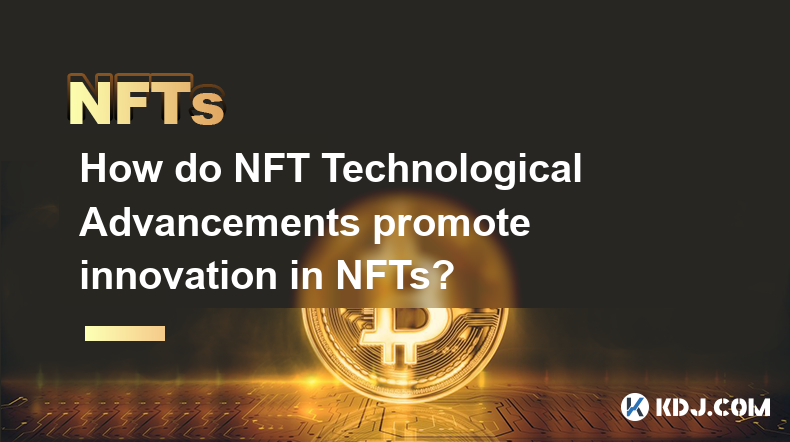
Key Points:
- Improved Scalability: Technological advancements are addressing NFT scalability issues, allowing for faster transactions and lower fees.
- Enhanced Interoperability: New protocols are enabling NFTs to function across different blockchains, expanding their utility and reach.
- Increased Functionality: Developments like fractional NFTs and NFT royalties improvements are adding new dimensions to NFT functionality.
- Metaverse Integration: NFTs are becoming increasingly integrated with the metaverse, creating new opportunities for digital ownership and interaction.
- Decentralized Storage Solutions: Advancements in decentralized storage aim to enhance security and accessibility of NFT assets.
How do NFT Technological Advancements promote innovation in NFTs?
The world of Non-Fungible Tokens (NFTs) is rapidly evolving, driven by continuous technological advancements. These innovations are not merely incremental improvements; they are fundamentally reshaping the NFT landscape, fostering creativity and unlocking new possibilities. One of the most significant areas of progress lies in tackling the limitations of existing blockchain technologies.
The scalability problem has been a major hurdle for NFTs. High transaction fees and slow processing times have hindered mass adoption. However, advancements like layer-2 scaling solutions and the development of new, more efficient blockchains are directly addressing this. These solutions promise faster and cheaper NFT transactions, making them accessible to a wider audience. This improved scalability directly fuels innovation by lowering the barrier to entry for creators and collectors.
Interoperability, the ability for NFTs to function seamlessly across different blockchains, is another key area of progress. Previously, NFTs were often siloed within their respective ecosystems. Now, emerging cross-chain protocols are breaking down these barriers, allowing NFTs to be used and traded across various platforms. This increased interoperability opens up entirely new avenues for innovation, enabling the creation of more complex and interconnected NFT experiences.
NFT functionality itself is undergoing a significant transformation. The concept of fractional NFTs, allowing ownership of a single NFT to be divided amongst multiple parties, is gaining traction. This opens up opportunities for greater liquidity and broader participation in the NFT market. Simultaneously, improvements in royalty mechanisms are empowering creators by providing them with more control over the secondary market sales of their work. These enhancements not only improve the financial aspects of NFT creation but also incentivize innovation and artistic expression.
The metaverse, a persistent, shared 3D virtual world, is becoming increasingly intertwined with NFTs. NFTs are proving to be vital in establishing digital ownership within these virtual environments. Users can use NFTs to represent their in-world assets, avatars, and virtual land. This integration is pushing the boundaries of digital ownership and interaction, driving innovation in areas like virtual fashion, gaming, and digital art experiences. The possibilities for creative expression within this burgeoning space are practically limitless.
Security and accessibility of NFT assets are paramount. Centralized storage solutions pose risks to the very essence of decentralization. Therefore, technological advancements in decentralized storage solutions are crucial. These solutions, often built upon IPFS (InterPlanetary File System) or similar technologies, aim to ensure that NFT data is securely stored and accessible, even if the original platform goes offline. This increased resilience fosters trust and encourages wider adoption, thereby fueling innovation.
The development of more user-friendly interfaces and tools is also a significant factor in promoting NFT innovation. The initial complexity of interacting with NFTs has been a barrier for many. However, the emergence of more intuitive platforms and tools is making NFT creation, trading, and management significantly easier. This simplification allows a broader range of individuals to participate, fostering creativity and driving innovation.
Frequently Asked Questions:
Q: What are layer-2 scaling solutions, and how do they improve NFT scalability?
A: Layer-2 scaling solutions are technologies built on top of existing blockchains (like Ethereum) to process transactions off-chain, reducing the load on the main chain. This leads to faster transaction times and lower fees, directly improving NFT scalability.
Q: How does improved interoperability benefit NFT creators and collectors?
A: Interoperability allows NFTs to move freely between different blockchains, expanding their utility and market reach. This benefits creators by widening their potential audience and collectors by giving them access to a broader range of NFTs.
Q: What are the potential risks associated with fractional NFTs?
A: While fractional NFTs offer increased liquidity, they also introduce complexities related to governance and the management of fractional ownership. Careful consideration of these aspects is crucial.
Q: How do decentralized storage solutions enhance the security of NFTs?
A: Decentralized storage removes the single point of failure associated with centralized servers. If one storage node fails, the data remains accessible via other nodes, increasing the resilience and security of NFT assets.
Q: What role does the metaverse play in the future of NFTs?
A: The metaverse is poised to become a major application space for NFTs, enabling the creation of virtual economies, digital assets, and immersive experiences built around unique digital ownership.
Q: What are some examples of user-friendly NFT platforms?
A: Numerous platforms are emerging that simplify NFT interactions, offering intuitive interfaces for both creators and collectors. Specific examples vary and are constantly evolving. Researching current market leaders is advisable.
Disclaimer:info@kdj.com
The information provided is not trading advice. kdj.com does not assume any responsibility for any investments made based on the information provided in this article. Cryptocurrencies are highly volatile and it is highly recommended that you invest with caution after thorough research!
If you believe that the content used on this website infringes your copyright, please contact us immediately (info@kdj.com) and we will delete it promptly.
- Is Ethereum (ETH) Dead as an Investment?
- 2025-04-06 08:40:12
- Bitunix exchange launches the Ultra version of K-line (candlesticks) on its mobile app integrated with TradingView
- 2025-04-06 08:40:12
- As XRP Has Become the Focus of the Market Due to Ripple's Legal Victory and ETF Expectations
- 2025-04-06 08:35:12
- Trump-Themed Coins Dominate the List of Top-Performing Cryptos Today
- 2025-04-06 08:35:12
- Meme Coins Could Be Solana (SOL)'s Secret Weapon to $1,000
- 2025-04-06 08:30:12
- Did BlackRock's CEO Just Describe XRP Without Saying Its Name? Plus, One Ripple Alternative You Haven't Heard Of
- 2025-04-06 08:30:12
Related knowledge
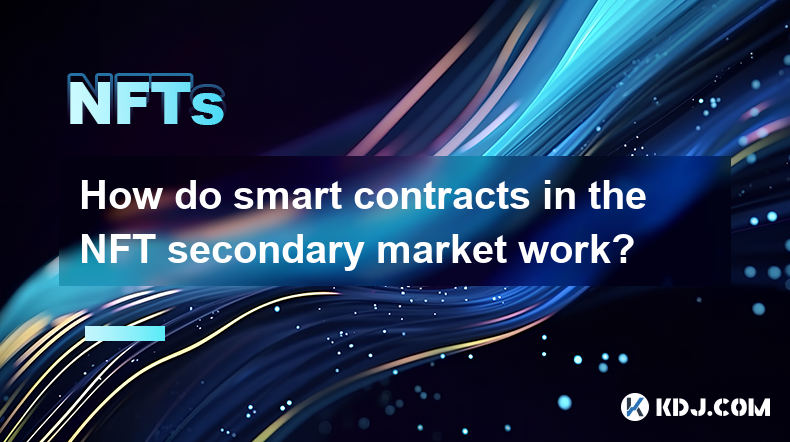
How do smart contracts in the NFT secondary market work?
Apr 03,2025 at 07:14am
Smart contracts play a pivotal role in the NFT secondary market, facilitating seamless transactions and enforcing predefined rules. These self-executing contracts with the terms of the agreement directly written into code are stored on the blockchain. In the context of NFTs, smart contracts automate the buying, selling, and transferring of digital asset...
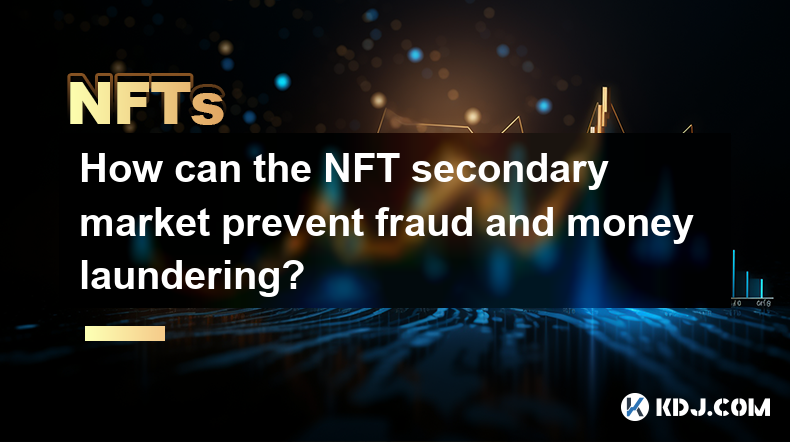
How can the NFT secondary market prevent fraud and money laundering?
Apr 03,2025 at 08:35am
The NFT secondary market has become a thriving hub for digital art and collectibles, but it also faces challenges in preventing fraud and money laundering. To tackle these issues, the market can implement various strategies and technologies to ensure a safer and more transparent trading environment. This article will explore how the NFT secondary market...

How are transaction fees in the NFT secondary market calculated?
Apr 04,2025 at 05:28am
The calculation of transaction fees in the NFT secondary market is a crucial aspect that both buyers and sellers need to understand. These fees can significantly impact the overall cost of transactions and the profits that sellers can make. In this article, we will delve into the various components that make up these fees, how they are calculated, and w...
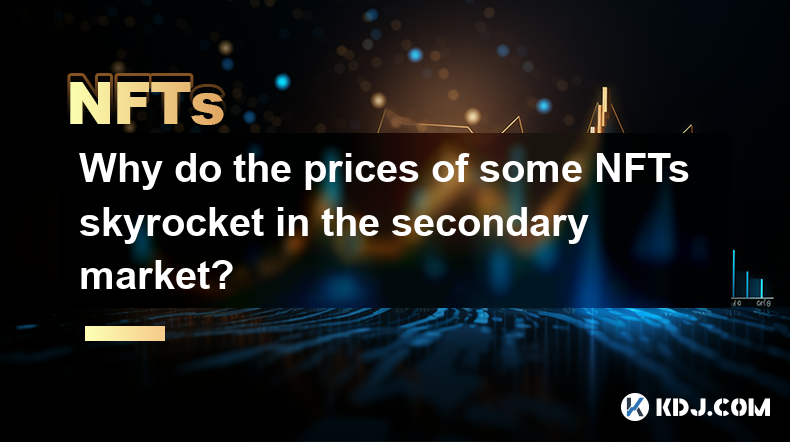
Why do the prices of some NFTs skyrocket in the secondary market?
Apr 06,2025 at 07:08am
The phenomenon of NFT prices skyrocketing in the secondary market is a fascinating aspect of the cryptocurrency and digital art world. Non-Fungible Tokens (NFTs) have taken the digital world by storm, and their value can surge dramatically after initial sales. Several factors contribute to this price surge, including rarity, demand, speculation, and the...
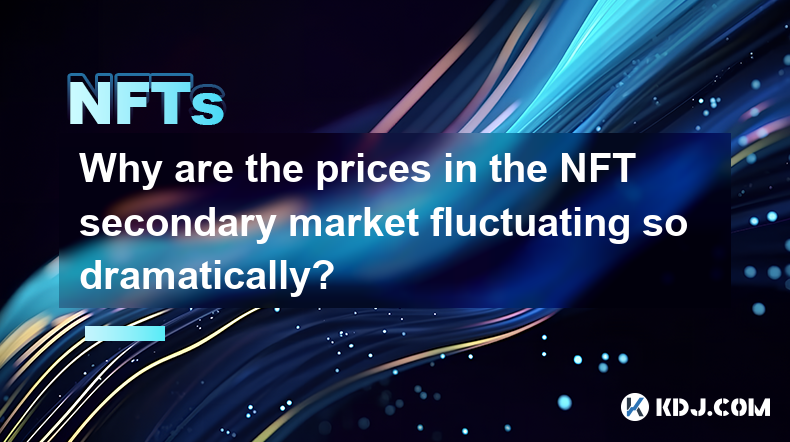
Why are the prices in the NFT secondary market fluctuating so dramatically?
Apr 03,2025 at 10:35pm
The NFT secondary market has been experiencing dramatic price fluctuations, leaving many in the cryptocurrency community puzzled and curious. To understand this phenomenon, it's essential to delve into the factors driving these price movements. From the impact of market sentiment and celebrity endorsements to the role of speculation and the unique natur...
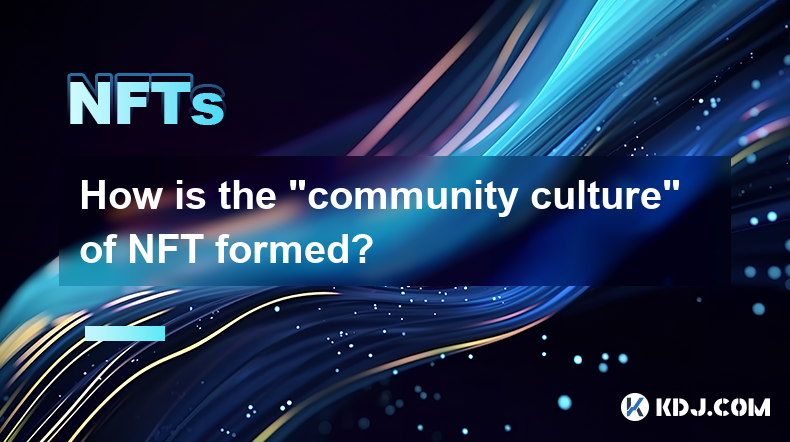
How is the “community culture” of NFT formed?
Apr 03,2025 at 11:07am
The formation of the 'community culture' within the NFT (Non-Fungible Token) space is a fascinating and multi-faceted process. It involves various elements such as shared interests, active engagement, and the creation of a sense of belonging among members. NFT communities often revolve around specific projects or artists, fostering a unique environment ...

How do smart contracts in the NFT secondary market work?
Apr 03,2025 at 07:14am
Smart contracts play a pivotal role in the NFT secondary market, facilitating seamless transactions and enforcing predefined rules. These self-executing contracts with the terms of the agreement directly written into code are stored on the blockchain. In the context of NFTs, smart contracts automate the buying, selling, and transferring of digital asset...

How can the NFT secondary market prevent fraud and money laundering?
Apr 03,2025 at 08:35am
The NFT secondary market has become a thriving hub for digital art and collectibles, but it also faces challenges in preventing fraud and money laundering. To tackle these issues, the market can implement various strategies and technologies to ensure a safer and more transparent trading environment. This article will explore how the NFT secondary market...

How are transaction fees in the NFT secondary market calculated?
Apr 04,2025 at 05:28am
The calculation of transaction fees in the NFT secondary market is a crucial aspect that both buyers and sellers need to understand. These fees can significantly impact the overall cost of transactions and the profits that sellers can make. In this article, we will delve into the various components that make up these fees, how they are calculated, and w...

Why do the prices of some NFTs skyrocket in the secondary market?
Apr 06,2025 at 07:08am
The phenomenon of NFT prices skyrocketing in the secondary market is a fascinating aspect of the cryptocurrency and digital art world. Non-Fungible Tokens (NFTs) have taken the digital world by storm, and their value can surge dramatically after initial sales. Several factors contribute to this price surge, including rarity, demand, speculation, and the...

Why are the prices in the NFT secondary market fluctuating so dramatically?
Apr 03,2025 at 10:35pm
The NFT secondary market has been experiencing dramatic price fluctuations, leaving many in the cryptocurrency community puzzled and curious. To understand this phenomenon, it's essential to delve into the factors driving these price movements. From the impact of market sentiment and celebrity endorsements to the role of speculation and the unique natur...

How is the “community culture” of NFT formed?
Apr 03,2025 at 11:07am
The formation of the 'community culture' within the NFT (Non-Fungible Token) space is a fascinating and multi-faceted process. It involves various elements such as shared interests, active engagement, and the creation of a sense of belonging among members. NFT communities often revolve around specific projects or artists, fostering a unique environment ...
See all articles





















































































